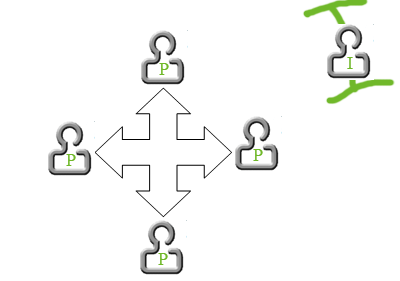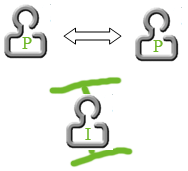More on Two-Person Interviews (TPIs)
mkoole, · Categories: Identity, PhD Studies, Research · Tags: focus groups, interviews, one-person interviews, two-person interviewsFor a description (Part 1) of Dr. David Morgan’s TPIs, please refer to my previous blog post.
The effects of structure on the TPI
The degree of structure you use in your interviews will affect the data you glean. Highly structured TPIs suggest greater interaction with the participants and the interviewer. The greater the structure the more the interviewers controls the questions and answers. Highly structured interviews allow a researcher to dig into issues in depth and in great detail. In a case in which the interviewer questions each TPI participant individually, the participants may build upon each other’s responses, but still answer the questions separately. This is sometimes referred to as a serial interview.
 |
 |
|
High Structure
|
Low Structure
|
On the other end of the continuum, a low-structured or unstructured TPI (which, I believe, is the intent of Morgan’s TPI method) will permit greater interaction between the participants themselves. In a low-structure TPI, the interviewer stimulates conversation through the asking of questions or by setting up tasks. Less structured interviews are more exploratory in nature. And, a researcher using an unstructured TPI approach will have more opportunity to observe interactions between the two participants.
Homogeneity vs. heterogeneity
This refers to the similarities and/or familiarity of the participants to each other. For example, are they students in the same program? Are they from the same country?
According to Morgan, focus groups usually involve homogenous groups. But, it is possible to do either with TPIs. In one-person interviews (OPIs), the rapport between the interviewer and the participant is very important. In focus groups and TPIs, the rapport between the participants is important. As this technique is yet still very un-researched, the impact upon the quality and kind of observational data derived from homogenous vs. heterogeneous participants is yet unknown. I suspect that the quality of such data is also very much related to the kind of study and the kind of data sought by the researcher.
The TPI setting
Since the goal of a TPI is to encourage conversation, the interviewers will place the participants into a comfortable arrangement in which they can face each other just as they would in a normal conversation. In a face-to-face TPI, this might mean that the participants are sitting somewhat adjacent to each other. The interviewer will place herself somewhat apart from the conversants. Of course, this will be dictated by cultural patterns of appropriate proximity.
But, how can one achieve this online? Using video-conferencing technology, I would recommend that the interviewer ask the participants to use their video cameras and any of the other tools available (instant messaging, etc.). Once the main questions have been asked or the activity is introduced, the interviewer can turn off her camera. In some cases, she can make her camera less prominent. In a case in which the activity might be to use a whiteboard or brainstorming software, the interviewer can allow the participants to take control.
Conversation starters
In many face-to-face situations such as classrooms or workshops, facilitators use various ice-breaker techniques. How can this be done online? Well, whenever I chat with someone in a different province or country, I am curious about their weather, time zone, seasons, etc. Morgan recommends that conversation starters are 1) easy to answer, 2) interesting to both parties, and 3) something on which they want to hear someone else’s opinion/experience. If the conversation starter is somewhat removed, then the interviewer must find a way to bring the conversation back to the topic of the interview.
For a description of Dr. David Morgan’s TPIs, please refer to my previous blog post.




